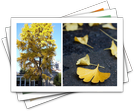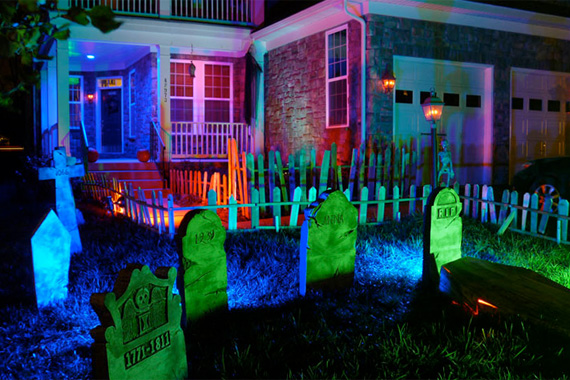Halloween Home Maintenance: Spooky Sounds and Strange Smells
Are you haunted by strange noises and weird odors? With the proper maintenance, you’ve got more than a ghost of a chance to rest easy
Creaking and Popping in the Night
The many materials that make up your house — wood framing, plywood, glass, metal ducts, nails, plumbing pipes — all expand and contract at different rates.
When a house cools at night, these materials may move slightly, rubbing against each other and making noises. Occasionally, they’ll contract with an audible pop.
These sounds tend to be more noticeable in fall, when warm days give way to rapidly cooling nights. The bad news? Not much you can do about it. The good news? Those sounds are harmless and normal.
The many materials that make up your house — wood framing, plywood, glass, metal ducts, nails, plumbing pipes — all expand and contract at different rates.
When a house cools at night, these materials may move slightly, rubbing against each other and making noises. Occasionally, they’ll contract with an audible pop.
These sounds tend to be more noticeable in fall, when warm days give way to rapidly cooling nights. The bad news? Not much you can do about it. The good news? Those sounds are harmless and normal.
Zombie Odor
It’s either time to throw out the garbage, or you’d better call your gas utility to check on your gas lines and connections.
Natural gas is odorless, but natural gas suppliers add a foul-smelling odorant — butyl mercaptan — to alert occupants to any leaks. The smell is like rotten eggs.
Leaks can occur at your gas-fired water heater, fireplace, clothes dryer, and any gas line. Leaking natural gas is potentially dangerous — leave the house and call your natural gas provider to assess the situation. Most utility companies perform safety checks for free.
Footsteps in the Attic
Amplified by an unfinished attic space, a raccoon or even a good-size squirrel on your roof might sound like an ax murderer is doing the polka overhead.
These rooftop transits are normal for critters — roofs offer a nice long unobstructed highway.
Make sure your soffit, rafter, and gable roof vents are covered with screens and in good shape, or your rooftop buddies might find their way into your attic for real. Trim back branches that provide critters easy access to your roof.
Something’s Burning
You can smell the odor of burnt wood, but the smoke detectors aren’t going off and there’s no smoke in the house. The culprit could be your fireplace — even if you haven’t had a fire for days.
The probable cause is a drafty chimney and negative air pressure in your home, meaning that outside air is infiltrating down your chimney, bringing stale burnt smells with it.
Stop drafts by making sure your damper has a good seal. Regulate air pressure by adding more cold air return ducts to your HVAC system. You’ll get rid of the odor and save on your energy bill, too.
Moaning and Clattering
These classic spooky sounds often show up when the wind blows and there’s a storm brewing.
Vents for clothes dryers, bathrooms, and water heaters exit out the roof or the side of the house. To prevent backdrafts, these vents have dampers — flaps designed to let vented air out and prevent outside air from coming in. These flaps sometimes move and rattle in high winds.
Because dampers often are located in attics or in between floor joists, the sound can be difficult to pinpoint. You may need a new damper ($85).
It’s either time to throw out the garbage, or you’d better call your gas utility to check on your gas lines and connections.
Natural gas is odorless, but natural gas suppliers add a foul-smelling odorant — butyl mercaptan — to alert occupants to any leaks. The smell is like rotten eggs.
Leaks can occur at your gas-fired water heater, fireplace, clothes dryer, and any gas line. Leaking natural gas is potentially dangerous — leave the house and call your natural gas provider to assess the situation. Most utility companies perform safety checks for free.
Footsteps in the Attic
Amplified by an unfinished attic space, a raccoon or even a good-size squirrel on your roof might sound like an ax murderer is doing the polka overhead.
These rooftop transits are normal for critters — roofs offer a nice long unobstructed highway.
Make sure your soffit, rafter, and gable roof vents are covered with screens and in good shape, or your rooftop buddies might find their way into your attic for real. Trim back branches that provide critters easy access to your roof.
Something’s Burning
You can smell the odor of burnt wood, but the smoke detectors aren’t going off and there’s no smoke in the house. The culprit could be your fireplace — even if you haven’t had a fire for days.
The probable cause is a drafty chimney and negative air pressure in your home, meaning that outside air is infiltrating down your chimney, bringing stale burnt smells with it.
Stop drafts by making sure your damper has a good seal. Regulate air pressure by adding more cold air return ducts to your HVAC system. You’ll get rid of the odor and save on your energy bill, too.
Moaning and Clattering
These classic spooky sounds often show up when the wind blows and there’s a storm brewing.
Vents for clothes dryers, bathrooms, and water heaters exit out the roof or the side of the house. To prevent backdrafts, these vents have dampers — flaps designed to let vented air out and prevent outside air from coming in. These flaps sometimes move and rattle in high winds.
Because dampers often are located in attics or in between floor joists, the sound can be difficult to pinpoint. You may need a new damper ($85).
Read more: http://www.houselogic.com/home-advice/maintenance-repair/spooky-house-noises-bad-smells/#ixzz2j7tUTI1O
 If you neglect your home maintenance projects, you could end up with problems scarier than any ghost or goblin. Image: Knape/Vetta/Getty Images
If you neglect your home maintenance projects, you could end up with problems scarier than any ghost or goblin. Image: Knape/Vetta/Getty Images








